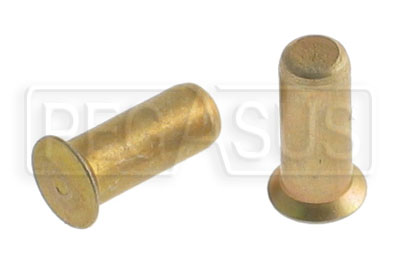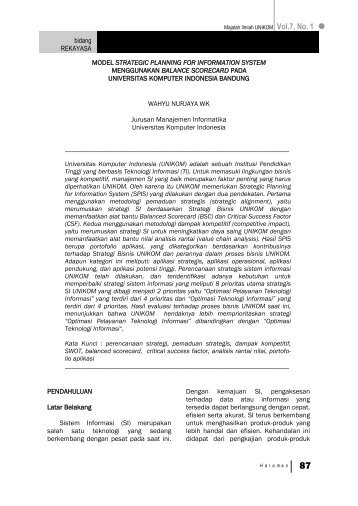Ms20426 Rivet Installation
Hi folks; I haven't been around for a while. Life just gets too busy.Wil - this might be one for you.The folks I represent are in the process of procuring a major piece of replacement structure for an aging airframe.
The supplier wants to 'butt drive' solid rivets (D-rivets) in the primary structure. By 'butt drive', they mean to drive the rivets with the gun on the tail instead of the manufactured head. (This is NOT referring to the wonderful 'NACA' rivet installations where the tails were bucked into machined countersinks.)All of the process specs and test data support only 'standard' installation, and don't specifically address this method.
I am going to stick my foot into this one; it may get chopped off at the ankle.Some years ago, I read a statement that said; 'The aircraft industry is the only one that allows a rivet to be driven from the factory head side. This is due to the resilience of the structure allowing it to be driven with the rivet into the bucking bar. Right now I cannot find that book. Somebody else may recognize that statement and be able to quote chapter and verse.It would follow then, that where a structure is not resilient, like a heavy frame or cross member, that conventional riveting (From the shop head or buck tail side) would be preferred.
The rational for driving from the factory head side is to ensure that the head is fully seated against the part it is being driven into. If the part has too much inertia it is very difficult to form the buck tail.The easier solution then, is to put the bucking bar against the factory head of the rivet, and buck the tail. The dis advantage of this is that if the bucking bar is not perfectly held the rivet can creep back a little as it is being formed and leave a gap under the head.This makes the QA inspectors day as he crawls over your job brandishing his feeler gauge.RE: Solid Rivet Installations - 'Butt Driving' (Aerospace) 8 Mar 11 20:10.
Im not sure about a readily available NACA datasheet or public domain resources but I have found a reference in Airbus SRM about this. Super Stress. Please, advise.Protruding head MS20470 brazier style: resulting-in protruding heads on both sides??Flush-tension head MS20426 100-deg style into a csk or dimple-into-csk: resulting-in flush one-side and protruding opp side??Flush-shear head NAS1097 style into a csk or into double csks: resulting in flush one-side and protruding opp side; or flush both sides??What temper are the 'D' rivets driven????' D' 2017 rivets can be driven 'hard' with a chem-conversion-coating OR anodized finish; or can be driven 'soft' 'ice-box' temper (-W), with an anodize finish, ONLY. Per NAS523, 'D' rivets driven 'hard' attain the -T4 temper; while 'D' rivets driven 'soft' -W, as quenched attain the -T31 temper (in no-more-than 96-hours). Minor difference, structurally, in the long-term. But a HUGE difference in installation ease and quality especially for larger diameter rivets.I will check some older riveting source-data, but I am NOT comfortable with reverse driving brazier head rivets without the proper sets.
Issue may be fuzzier with flush head rivets.NOTE. Your shop should have strict process documentation that rigidly establishes for riveting methodology that is non-standard. IF there are NO rigid shop procedures training? in place then 'You get-what-you-get'.
And riveter-to-riveter random variations can enter the picture.Hole (or hole/csk) preparation???As usual, hole preparation IE: straightness, perpendicularity, roundness, roughness, deburring, inner-laminar chipping, +plus all countersink issues, etc can make a BIG difference. Wil,Here's what I know.1/4' MS20470D (BM8) rivets.Temper: driven hard.Hole prep: Good hole prep and quality control per standard shop practices.The primary concern is about gapping and consistent residual clamp-up. Hole fill on the manufactured head side is generally constrained by the manufactured head so the benefit of hole fill is less than on the buck-tail side by around 5-10% (in terms of stress) depending on the specific drive (standard/overdrive), fastener style, material, etc.If gapping is more likely with this installation, and the gapping is not caught, overall joint quality will suffer and lead to premature fatigue cracks. Additionally, varying degrees of hole fill along a fastener line will lead to non-uniform load transfer and hot-spots.
Driving the head into the structure reduces the chance of gapping even if the person on the bucking bar pushes the rivet out slightly to identify which rivet he/she is ready to buck and the driver hits the trigger too soon before pushing the set against the head/structure. On the first few hits the gun will still drive the heard toward the structure because there typically hasn't been enough expansion to preclude shank movement in the hole. This reduces the probability of gapping.I think we are at the point where we have convinced the supplier to install per approved procedures for future units.
The question now is whether or not we have a potential quality issue on previously-produced items. We may not be able to address this analytically. The relative fatigue performance of the joint is irrelevant if we can't ascertain the quality of the install (head gapping).Still, if you have any data that suggests relative performance of joints with rivets bucked from head vs. Tail side, it would be useful.Thanks for your time!SuperStress RE: Solid Rivet Installations - 'Butt Driving' (Aerospace) 10 Mar 11 15:19. SuperStress.BM8's will be an SOB to drive with a 3X rivet gun in any conventional gun-on-head sense not to mention extremely loud and possibly damaging to the structure.I suspect that the mechanics want to reverse drive to ensure max gun-energy directed to deform the tail.

If this is the reason, then stop the presses. As You indicate there will be hole-fill issues galore.IF this is the case, then what has happened is that the shop is circumventing rivet conventional installation protocol in-favor-of 'just getting the job done any-way they can'. This is a shabby way to run an aerospace company.IF the 1/4D rivets MUST be driven hard, then the only practical and reliable methods are (a) manually-guided hand-squeezing using a portable long-jaw hydraulic unit; or (b) a gantry type automated squeeze-unit, IE: as used for automated skin panel Assy etc.Otherwise the shop needs to get intimate with the ice-box '-w' temper rivet installation technique.
Guys tell me that D and DD rivets up-to/slightly above 3/8'-Dia shoot much like 1/8'-to-5/32'-Dia hard rivets 'nice and soft. Like butter'. Rivet installation quality is very good.
The only problem here is that the shop REALLY needs to understand how the process works; and that D rivets with an anodized finish to survive solution HT may be hard to find.Regards, Wil TaylorTrust - But Verify!We believe to be true what we prefer to be true.For those who believe, no proof is required; for those who cannot believe, no proof is possible. RE: Solid Rivet Installations - 'Butt Driving' (Aeronautics) 11 Mar 11 01:30. Wil and super stress,' I suspect that the mechanics want to reverse drive to ensure max gun-energy directed to deform the tail. If this is the reason, then stop the presses. As You indicate there will be hole-fill issues galore.' 'They will be mushrooming the tail without swelling the shank.On a 1/4' dia rivet the installer should be using at least a 5X gun.
An442 Rivet
Most 3X guns max out at a 3/16' dia rivet with a 470DI would feel happier using a 7X slow hitter.Quenched rivets will be a lot easier to shoot if the shop can stay within the 'out times' Then on a 1/4' rivet you could get by with a 5X hammer without any problem.B.E. RE: Solid Rivet Installations - 'Butt Driving' (Electrical) 21 Mar 11 18:30. Can some point me to a 'coupon test method' for rivets. Would be nice to confirm (shear/tension) mechanical properties on batches of rivets (i.e. AN4 washer, two sheets 0.100', another AN4 washer.
Then either pull for shear test, or form into a delta shape and pull to failure for tension.I'm thinking of a pull test. 38,000 psi rivet spec, but on a AN3 diameter should pull with more than 26 pounds of force. Simple newsletter approach for the local EAA chapter on how to make sure you have good techniques.RE: Solid Rivet Installations - 'Butt Driving' (Aeronautics) 18 Apr 11 18:15.
